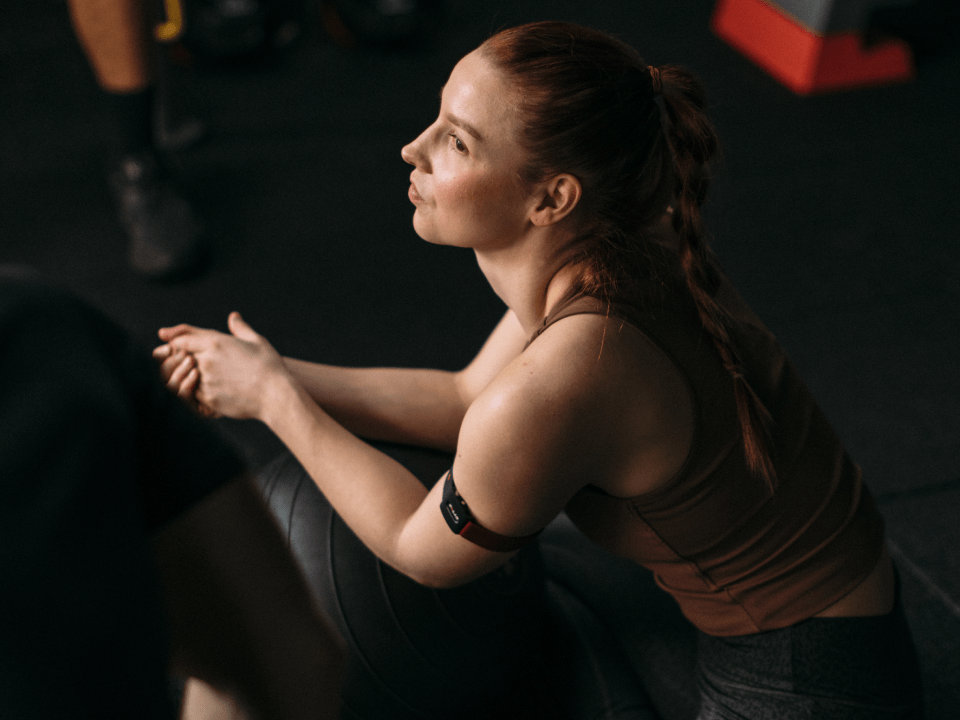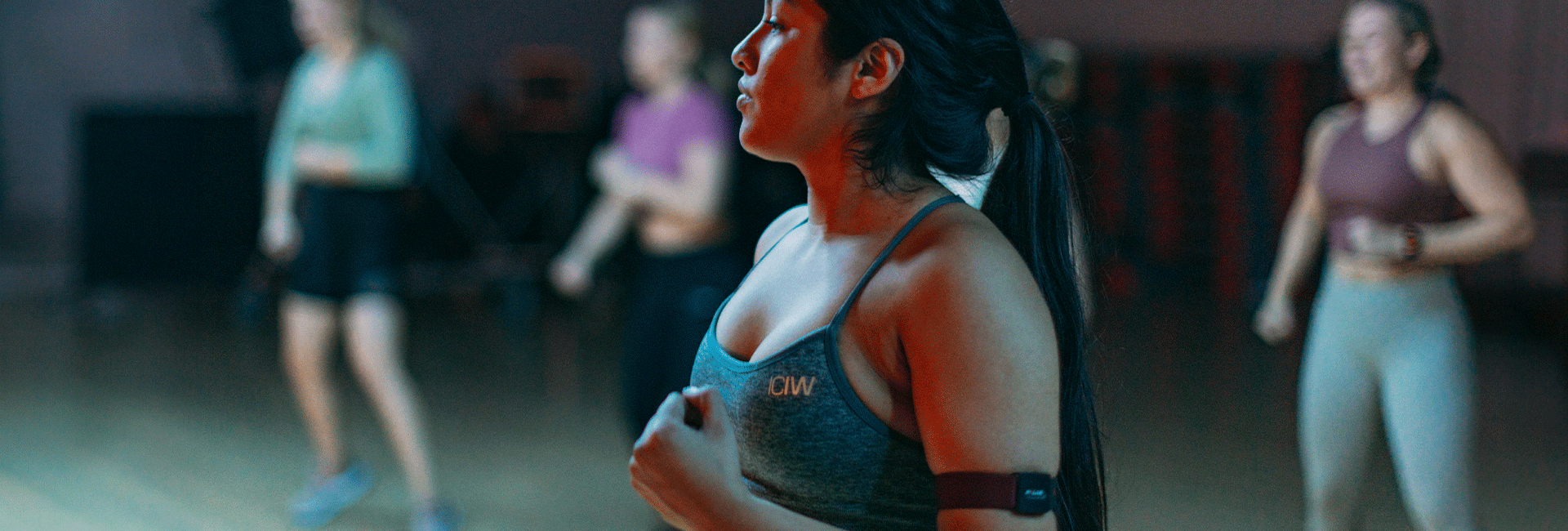Recently, Michael has been wondering if it’s possible to press CTRL+ALT+DELETE on his fitness. The London-based computer programmer has lost momentum with his workouts over the past few months and can’t figure out what has changed. He’s been putting in the same amount of effort, doing the same reps, with the same weights, but with no progress. And now he’s started to lose motivation.
“I started my thirties with the goal to finally build some muscle,” he recalls, “and the first few months were a real game-changer for me. I learned so much really quickly: about food, equipment, and supplements. Everything about bulking up. Plus, I generally felt comfortable going to the gym for the first time in my life, too.”
Yet, after the first six months, his training began to feel different. “I was so committed at the start, and I could see the difference it was making. I could feel it, too. But then, everything slowed down. I’ve really started to wonder what’s the point if what I’m doing isn’t making a difference.”
What Michael has encountered is a workout plateau. When it comes to training, this plateau effect can be a significant obstacle for everyone, from professional athletes to first-time fitness enthusiasts like him. It’s an entirely normal experience, but that doesn’t make it any less frustrating. So, how do you overcome this lack of progress and, as Michael puts it, give your fitness a “reboot?”
How can you identify a workout plateau?
Do you feel like you’ve hit a wall with your workouts? You’re not alone. The dreaded workout plateau is characterized by a frustrating stagnation in progress despite maintaining your usual routine. It’s called a plateau because, after a period of development, you reach a point where you experience little or no change. That’s despite continuing to do the same about training.
So, how do you know you’ve encountered this invisible barrier? One telltale sign is a decline in motivation. Maybe, like Michael, you once relished the endorphin rush of a workout, but now, dragging yourself to the gym feels like climbing Mount Everest. It feels like your heart isn’t in it anymore.
Another clue is the absence of progress, such as the bench press refusing to budge past a certain weight. You’re no longer seeing the results from working out that you once did, and it’s left you puzzled, annoyed, or ready to throw in the gym towel.
But wait! These are your body’s way of whispering, “Hey, time for a change!” So, how do you make that happen?

What causes workout plateau?
So, why do plateaus arise? The most likely scenario is that your body has adjusted to the demands of your training. So, for example, lifting the same weights feels pretty easy now, but you haven’t tried to progress to something heavier. Another common experience is that you’ve stopped giving your body what it needs (primarily fuel and rest) to keep up with the progress you’re making. In this case, you could have had a tough month at work or in your personal life, which caused you to sleep poorly and eat unhealthily – and now, your workout progress has declined, too.
The main culprit for a workout plateau is physiological adaptation.
As we’ve seen above, the main culprit for a workout plateau is physiological adaptation. Your body is an incredibly efficient machine, constantly adjusting to the demands you place on them. When you stick to the same workout routine for an extended period, your muscles become familiar with the exercises, leading to a decreased training stimulus and, consequently, slower progress.
Understanding how long it takes to see results working out is essential. Plateaus don’t occur after a few weeks of training. Instead, you’ll likely experience it after many months of consistent training. In Michael’s case, it took 7 to 8 months of regular training before he stopped seeing results and felt his motivation and enjoyment wane.
Similarly, be wary of working out too much because overtraining is another potential cause of workout plateaus. Pushing yourself too hard without adequate rest can lead to fatigue and hinder muscle recovery, ultimately stalling your progress.
Neglecting proper nutrition can also be a reason why you’re not progressing. Without it, your body will have insufficient fuel to repair and build muscle, further impeding your journey. If you were focused on eating macros when you first started training but have recently let this slide, then this could be why you aren’t seeing results from your workouts.
Other reasons could include ineffective or inconsistent training. Be honest with yourself about how you have been training and what your goals are. Perhaps your lifestyle has changed recently, and you haven’t been putting in the same amount of time to your fitness as you were previously. Or what you’re hoping to achieve isn’t matched by how you train. After all, your lack of motivation could be because you’re not working out in a way that works for you.
Are workout plateaus a myth?
Of course, not everyone experiences plateaus, so you may come across someone who brags that they don’t believe in them. “I’d overheard someone at the gym saying that hitting a plateau isn’t a real thing,” notes Michael. “So, I wasn’t sure what to believe.”
While many studies on recreational and elite athletes show evidence of performance stagnation after periods of consistent training, it raises a question of perception. Are workout plateaus a mythical monster holding us back or a misunderstood milestone in the process of building a better body?
While plateaus might not be absolute brick walls, a decrease in progress is undoubtedly a real phenomenon. Yet, framing them purely as negative experiences is misleading. As mentioned above, they can be valuable indicators of adaptation and learning, prompting us to reassess our training strategies.
Consider workout plateaus a signal to introduce variation, which applies to overtraining. Don’t accept that a plateau means you must train harder (another workout myth). Again, we’ve seen that pushing yourself too hard can also be a cause.
Ultimately, the takeaway is this: a plateau is simply a natural part of the training journey, a point where we need to adjust our approach to keep progressing. Embrace it as an opportunity to learn, experiment, and push your limits in different ways.

How to change your workout routine to avoid a plateau
The number one rule: if you want to see progress, you must embrace progressive overload. Gradually increasing the intensity of your workouts, whether by lifting heavier weights, performing more reps, or shortening rest periods, forces your muscles to adapt to new demands, stimulating growth and propelling you beyond the plateau.
Often, that is easier said than done, especially when you get into long-term training. Learning to pace and calculate this progression can feel complicated if you’re relatively new to training, especially when trying to do enough without doing too much. That’s why Michael recently decided to get a trainer to help with this. “It’s been like a huge shot of adrenaline for me,” Michael enthuses. “Having someone to help reframe where I’m at right now was exactly what I needed. I’m very inspired again.”
Your usual routine could be lulling your body into efficiency, hindering progress. Consider injecting diverse sports into your workout mix. Tennis challenges hand-eye coordination and agility, while rock climbing strengthens mental focus and grip strength. Swimming builds cardiovascular endurance and engages underutilized muscle groups. Track each one with its specific sports profile to see how constantly introducing novel movements and stimuli, you challenge your body in fresh ways. By forcing it to adapt and rebuild, you can propel your body past the plateau and reignite your fitness spark.
Prioritize rest. It’s not just a reward for valiant workouts; it’s the fuel that powers them. When you sleep, your body rebuilds muscle tissue, replenishes energy stores, and repairs micro-tears. Skimp on sleep, and you’re basically sending your soldiers into battle on empty stomachs. Aim for 7-8 hours of quality sleep each night, and listen to your body’s cues for additional rest days when needed. Remember, recovery is just as important as exertion in the pursuit of fitness.
But what about the fuel before the fire? Proper nutrition is the foundation of a resilient physique. Ensure your diet is rich in protein, the building blocks of muscle, along with complex carbohydrates for sustained energy and healthy fats for satiety and hormonal balance. Track your macros and stay hydrated. Nourishing your body with optimal fuel is the ultimate act of self-respect and a surefire way to turbocharge your workouts.
Don’t mistake consistency for monotony. Variety is the spice of life and the secret ingredient to a dynamic routine that keeps plateaus at bay. Every four to six weeks, consider implementing a detraining period. Scale back the intensity and volume of your workouts, allowing your body and mind to refresh. Experiment with new activities like swimming, rock climbing, or yoga. Embrace the chance to discover hidden talents and build well-rounded fitness. During these periods, focus on active recovery, stretching, and mindfulness practices. Remember, sometimes, a step back is two steps forward.
By implementing these strategies – progressive overload, fitness tracking, proper nutrition, adequate rest, and strategic detraining – you transform your workout routine from a stagnant monologue to a thrilling, ever-evolving dialogue with your body. You become an architect of progress, proactively shaping your fitness journey instead of succumbing to the passive grip of the plateau.
Embrace the plateau
Plateaus are temporary roadblocks, not permanent walls. By recognizing their signs, understanding their causes, and implementing these strategies, you can smash through them and resume your triumphant march toward your fitness goals. After all, the summit of fitness lies not in avoiding plateaus but in skillfully navigating them.
If you liked this post, don’t forget to share so that others can find it, too.
Or give it a thumbs up!
I like this article
Please note that the information provided in the Polar Blog articles cannot replace individual advice from health professionals. Please consult your physician before starting a new fitness program.





